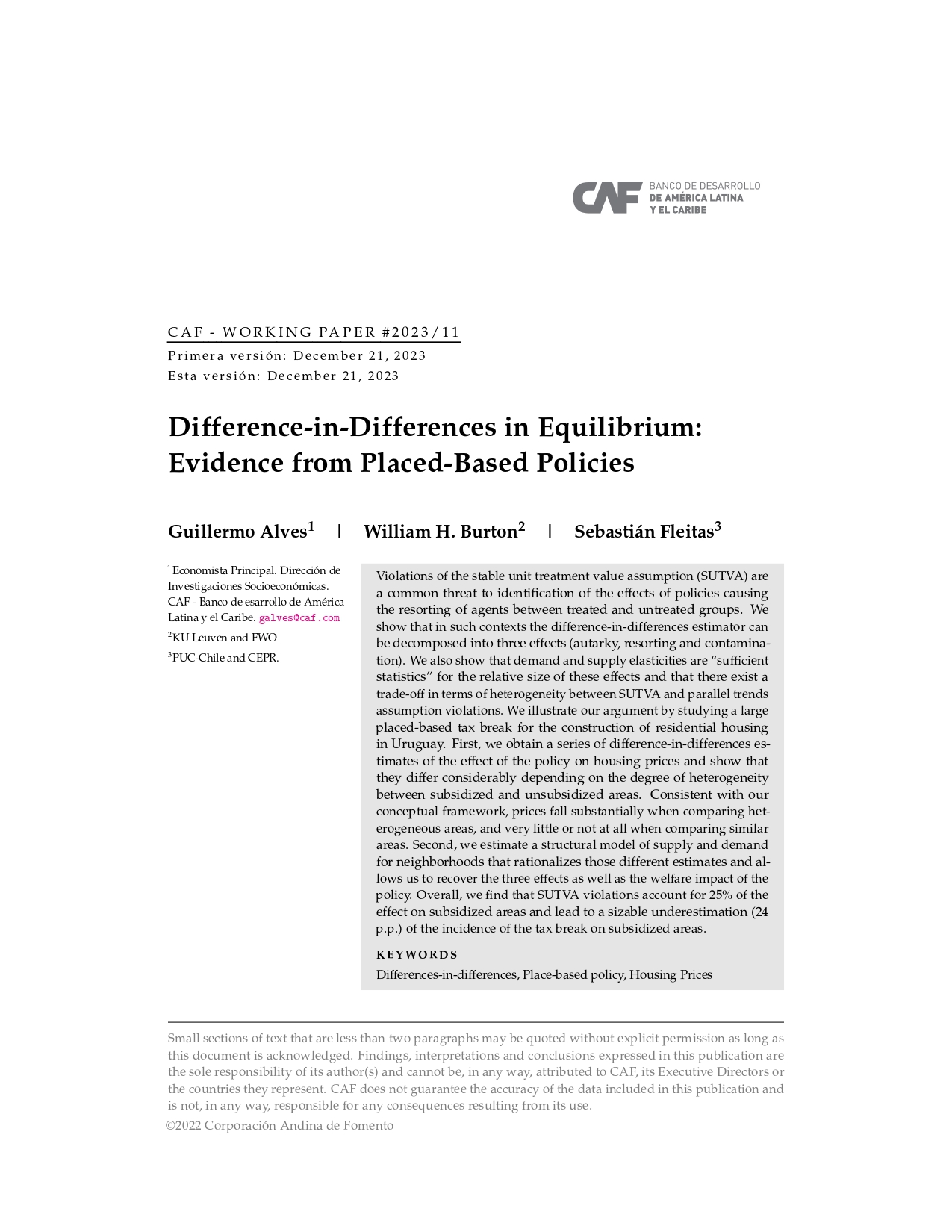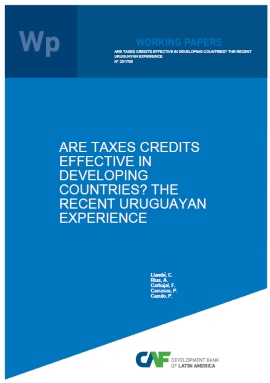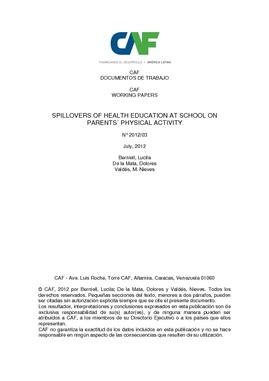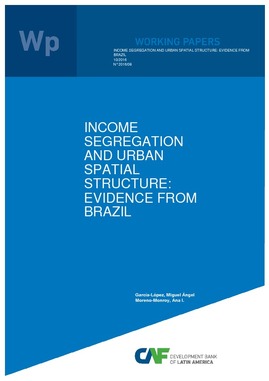Difference-in-Differences in Equilibrium: Evidence from Placed-Based Policies
Resumen
Violations of the stable unit treatment value assumption (SUTVA) are a common threat to identification of the effects of policies causing the resorting of agents between treated and untreated groups. We show that in such contexts the difference-in-differences estimator can be decomposed into three effects (autarky, resorting and contamination). We also show that demand and supply elasticities are “sufficient statistics” for the relative size of these effects and that there exist a trade-off in terms of heterogeneity between SUTVA and parallel trends assumption violations. We illustrate our argument by studying a large placed-based tax break for the construction of residential housing in Uruguay. First, we obtain a series of difference-in-differences estimates of the effect of the policy on housing prices and show that they differ considerably depending on the degree of heterogeneity between subsidized and unsubsidized areas. Consistent with our conceptual framework, prices fall substantially when comparing heterogeneous areas, and very little or not at all when comparing similar areas. Second, we estimate a structural model of supply and demand for neighborhoods that rationalizes those different estimates and allows us to recover the three effects as well as the welfare impact of the policy. Overall, we find that SUTVA violations account for 25% of the effect on subsidized areas and lead to a sizable underestimation (24 p.p.) of the incidence of the tax break on subsidized areas.
Materia
País / Región
Fecha
2023-12-26Citar de esta publicación
Item perteneciente a la Colección
Items Relacionados
Are Taxes Credits Effective in Developing Countries? The Recent Uruguayan Experience
Investment promotion through tax incentives has been a key component of the growth strategies pursued in Uruguay by the last three administrations. A ...
Spillovers of health education at school on parents´ physical activity
To prevent modern health conditions like obesity, cancer, cardiovascular illness, and diabetes, which have reached epidemic-like proportions in recent ...
Income Segregation and Urban Spatial Structure: Evidence from Brazil
We estimate the effect of urban spatial structure on income segregation in Brazilian cities between 2000 and 2010. Our results show that, first, local ...






